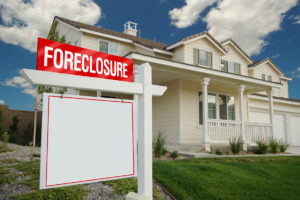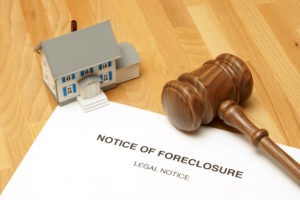 The plaintiff in this case, a financial institution, had appealed an order denying it summary judgment of foreclosure. A summary judgment motion is a motion that states there is no question of fact and the financial institution should be entitled to enter a judgment of foreclosure and sale without taking the case to trial. As stated earlier, the bank lost this motion and they appealed the loss of the motion. The appeal went to the Appellate Division of the 2nd Department.
The plaintiff in this case, a financial institution, had appealed an order denying it summary judgment of foreclosure. A summary judgment motion is a motion that states there is no question of fact and the financial institution should be entitled to enter a judgment of foreclosure and sale without taking the case to trial. As stated earlier, the bank lost this motion and they appealed the loss of the motion. The appeal went to the Appellate Division of the 2nd Department.
The Issue On Appeal
The issue with regard to the appeal was Real Property Actions and Proceedings Law Section 1304 (2) This section requires a homeowner receive 90 days notice prior to the initiation of a foreclosure lawsuit. The Appellate Court found the “notice required by this section shall be sent…in a separate envelope from any other mailing or notice.” This was a strict interpretation of the statute.
The Bank’s Problem
The bank in this case acknowledged the envelope it had sent to the homeowner’s contained the required notice under Real Property Actions and Proceeding Laws Section 1304 but it also included other information in 2 separate and distinct notices. The Appeals Courts ruled the bank did not comply with Real Property Actions and Proceedings Law Section 1304.The appeals court found the bank had not strictly complied with the requirements of this section of the law. Therefore the bank failed to satisfy a condition precedent before it could bring its foreclosure lawsuit. The court went on to hold this strict approach precluding any additional materials to be contained in the same envelope with the notice required under Real Property Actions and Proceedings Law 1304 “promotes stability and predictability.” in foreclosure cases. The decision of the lower court ruling against summary judgment for the plaintiff and dismissing the lawsuit was sustained.
Conclusion
Is the purpose of the 90 day notice under Real Property Actions and Proceedings Law Section 1304 is to give the homeowner’s specific notice they are in default on their mortgage and that they have 90 days to cure the default or a foreclosure lawsuit will be initiated against them to take back the house. This strict interpretation of this section by the appeals courts is designed to clarify to the homeowner the serious nature of this notice and the need to deal with being behind on their mortgage payments prior to the foreclosure lawsuit starting after 90 days.
 Elliot S. Schlissel is a foreclosure defenses lawyer who has been helping homeowners form more than 3 decades. He can be reached at elliot@sdnylaw.com or 516-561-6645, 718-350-2802, 631-319-8262.
Elliot S. Schlissel is a foreclosure defenses lawyer who has been helping homeowners form more than 3 decades. He can be reached at elliot@sdnylaw.com or 516-561-6645, 718-350-2802, 631-319-8262.


 There is approximately $539 million dollars allocated from federal funds to assist
There is approximately $539 million dollars allocated from federal funds to assist 
 On Thursday, December 4, 2021, New York State became the first state in the United States to receive United States Treasury approval for $539 million in a Homeowner Assistance Fund to aid individuals whose homes are in
On Thursday, December 4, 2021, New York State became the first state in the United States to receive United States Treasury approval for $539 million in a Homeowner Assistance Fund to aid individuals whose homes are in  Restricted lenders must comply with temporary NYS foreclosure laws protecting homeowners who’ve declared a COVID-19 hardship. Here’s a summary of changes effective May 1, 2021 until August 31, 2021, when statewide
Restricted lenders must comply with temporary NYS foreclosure laws protecting homeowners who’ve declared a COVID-19 hardship. Here’s a summary of changes effective May 1, 2021 until August 31, 2021, when statewide  In a case before Justice Arlene Bluth in Supreme Court in New York County a bank brought an application for a default judgment against defendants. The bank also requested the appointment of a referee to compute the sums due and owing to the bank in the foreclosure lawsuit. The defendants made a cross application to
In a case before Justice Arlene Bluth in Supreme Court in New York County a bank brought an application for a default judgment against defendants. The bank also requested the appointment of a referee to compute the sums due and owing to the bank in the foreclosure lawsuit. The defendants made a cross application to  Beneficial Homeowners Services Corp. had provided a loan to Carpenter when he bought his home. They claimed with regard to the loan Carpenter had signed a promissory note and said note was secured by a mortgage on his house.
Beneficial Homeowners Services Corp. had provided a loan to Carpenter when he bought his home. They claimed with regard to the loan Carpenter had signed a promissory note and said note was secured by a mortgage on his house. A homeowner can make a motion to dismiss the bank’s lawsuit in a foreclosure case based on a jurisdictional basis or the fact that there are meritorious defenses to the complaint submitted by the bank. Examples of a basis for dismissing the lawsuit brought by the financial institution are:
A homeowner can make a motion to dismiss the bank’s lawsuit in a foreclosure case based on a jurisdictional basis or the fact that there are meritorious defenses to the complaint submitted by the bank. Examples of a basis for dismissing the lawsuit brought by the financial institution are:  There are various strategies that can be utilized by attorneys for homeowners in
There are various strategies that can be utilized by attorneys for homeowners in  The term foreclosure refers to a lawsuit brought, usually by a financial institution, against a homeowner. The legal proceeding is brought in the Supreme Court of the County in which the property is located. The financial institution is always represented by a law firm. The law firm is not an in-house law firm. It is always a law firm hired by the financial institution that specializes in bringing foreclosure actions against homeowners.
The term foreclosure refers to a lawsuit brought, usually by a financial institution, against a homeowner. The legal proceeding is brought in the Supreme Court of the County in which the property is located. The financial institution is always represented by a law firm. The law firm is not an in-house law firm. It is always a law firm hired by the financial institution that specializes in bringing foreclosure actions against homeowners.



